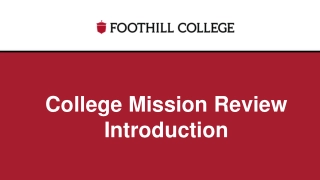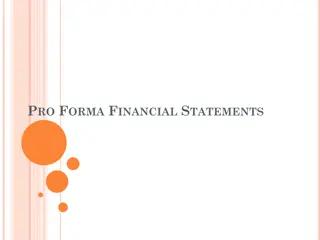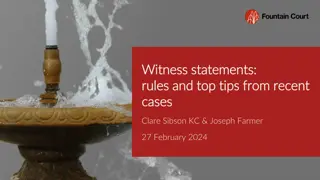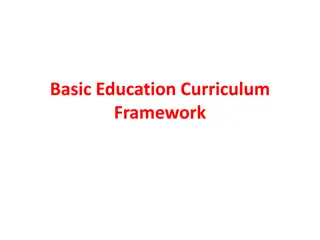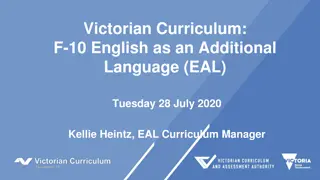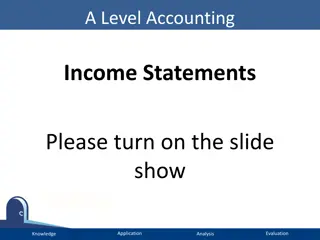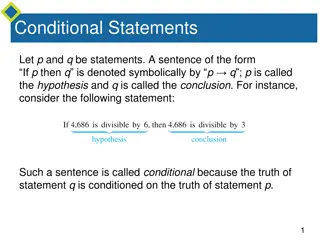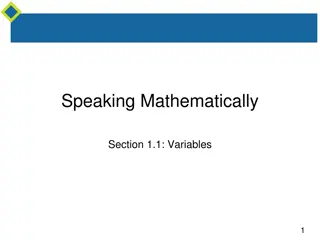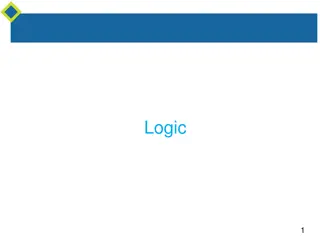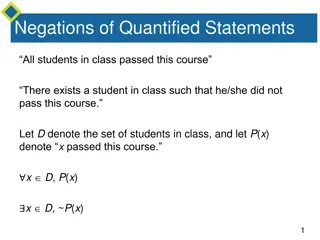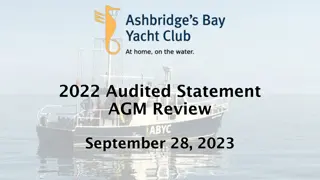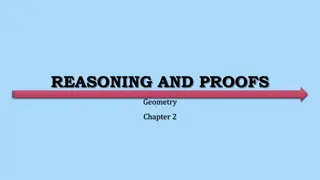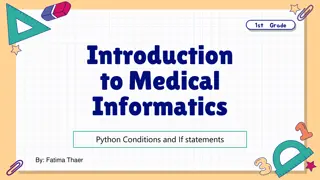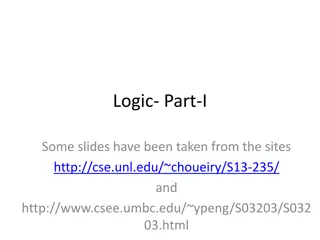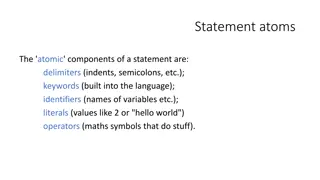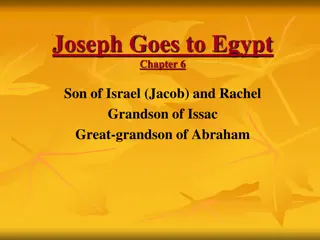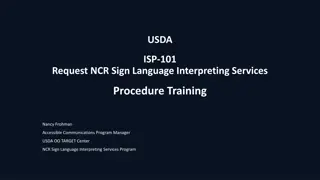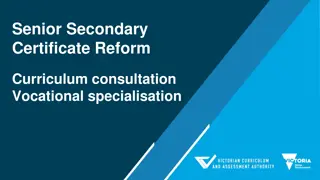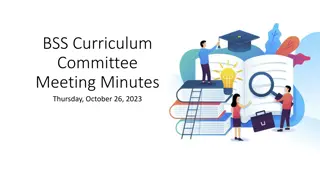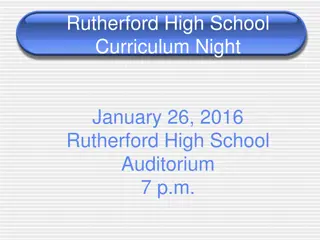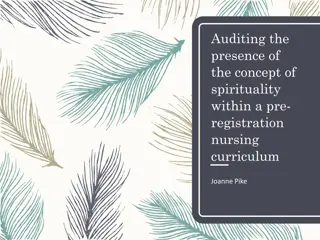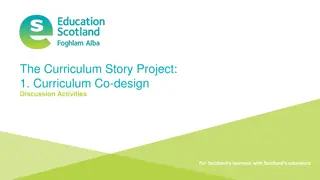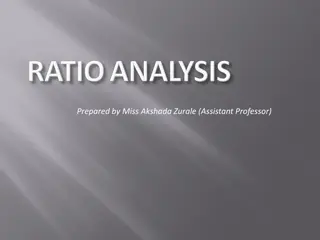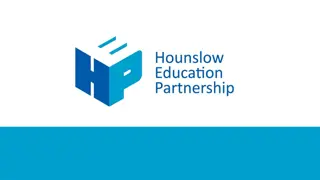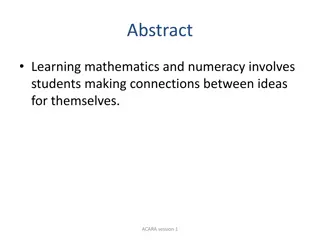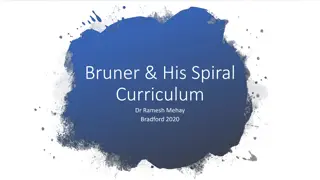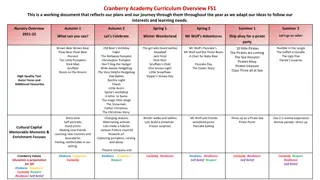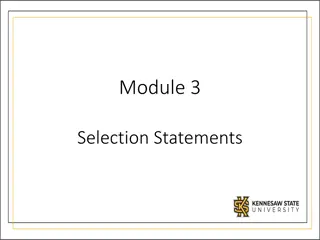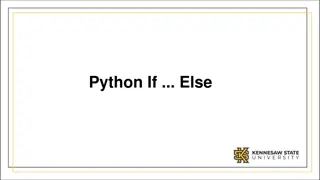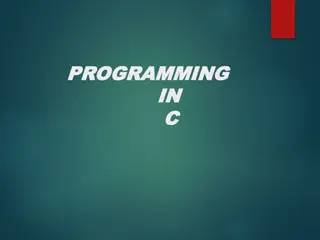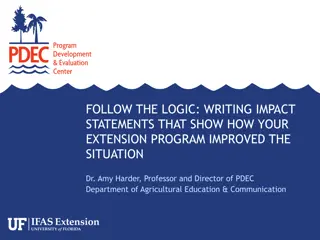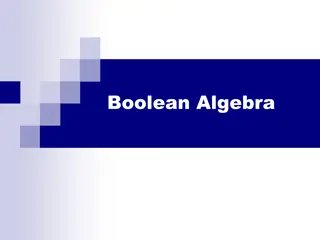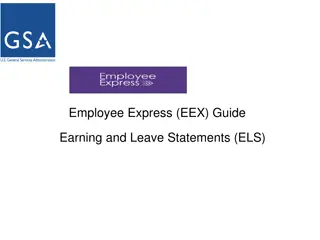Interpreting Curriculum Statements for Effective Learning
This educational material emphasizes the importance of aligning learning outcomes with the principles of the curriculum and constitution, focusing on social justice, inclusivity, and human rights. It discusses ways to structure lessons around desired outcomes, create inclusive learning environments, and promote dignity and equality among learners. Assessment methods and strategies for ensuring all learners can participate effectively are also highlighted.
Download Presentation

Please find below an Image/Link to download the presentation.
The content on the website is provided AS IS for your information and personal use only. It may not be sold, licensed, or shared on other websites without obtaining consent from the author. Download presentation by click this link. If you encounter any issues during the download, it is possible that the publisher has removed the file from their server.
E N D
Presentation Transcript
HSD L4 TOPIC 3 REVISION MALUTI TVET BETHLEHEM Mrs C Schnetler
Interpreting curriculum statements to define learning activities and assessment methods WAYS OF WORKING WITH LEARNING OUTCOMES IN A WAY THAT RELATES TO THE PRINCIPLES OF THE RNCS. USING AND ASSESSING OUTCOMES ACCORDING TO THE PRINCIPLES OF THE CONSTITUTION THE PRINCIPLES OF THE CONSTITUTION THAT UNDERPIN THE CURRICULUM ARE: * SOCIAL JUSTICE, A HEALTHY ENVIRONMENT, HUMAN RIGHTS AND INCLUSIVITY * OUTCOMES-BASED EDUCATION * A HIGH LEVEL OF SKILLS AND KNOWLEDGE FOR ALL * CLARITY AND ACCESSIBILITY * PROGRESSION AND INTEGRATION. EACH OF THESE PRINCIPLES SHOULD, AS FAR AS POSSIBLE, IN TEACHING, BE APPLIED TO EACH LEARNING OUTCOME. THIS WILL ENSURE THAT THE SPIRIT OF THE CONSTITUTION WILL BE CARRIED THROUGH ALL LEVELS OF TEACHING, AND THAT THE KIND OF LEARNING ENVIRONMENT AND LEARNER CREATED SHOULD BE AS THE CONSTITUTION AND EDUCATION POLICY ENVISION.
Interpreting curriculum statements to define learning activities and assessment methods DETERMINING THE LESSON CONTENT START BY LOOKING AT THE CONTEXT OF THE LESSON. BY CHOOSING APPROPRIATE LESSON CONTEXTS, YOU CAN BRING IN CURRICULUM PRINCIPLES. STRUCTURING THE LESSON AROUND LEARNING OUTCOMES DETERMINE WHICH OUTCOMES YOU NEED TO TEACH AND ASSESS. YOUR LEARNING PROGRAMME MUST ALSO BE PLANNED AND ORGANISED IN ADVANCE TO MAKE SURE THAT IT COVERS ALL ASPECTS OF THE CURRICULUM. REFER TO THE LEARNING PROGRAMME TO MAKE SURE THAT YOU PLAN YOUR LESSON AROUND THE OUTCOMES YOU NEED TO TEACH. TO COVER AND ASSESS THE OUTCOME, YOU NEED TO PLAN LESSON CONTENT THAT ALLOWS THE LEARNERS TO LEARN, PRACTISE, DEMONSTRATE AND BE ASSESSED ON THE SKILLS THAT THE OUTCOME SPECIFIES.
Interpreting curriculum statements to define learning activities and assessment methods CREATING AN INCLUSIVE LEARNING ENVIRONMENT ASSESS YOUR LESSON PLAN FOR INCLUSIVITY. YOU NEED TO ENSURE THAT LEARNERS WHO ARE DIFFERENTLY ABLED CAN PARTICIPATE IN THE LESSON: * IF YOU HAVE A LEARNER IN A WHEELCHAIR, MAKE SURE THAT THE ENVIRONMENT IS ACCESSIBLE * IF YOU HAVE A LEARNER WHO IS HEARING-IMPAIRED, MAKE SURE THERE ARE NO SOUNDS THAT COULD DISTRACT HIM/HER * IF YOU HAVE A LEARNER WHO IS VISUALLY IMPAIRED, CONSIDER PARING HIM/HER WITH A STRONG LEARNER WHO CAN COPE WITH PARTICIPATING IN THE LESSON WHILE EXPLAINING THE SURROUNDINGS TO THE VISUALLY IMPAIRED LEARNER AT THE SAME TIME. IN THIS WAY, YOU APPLY THE PRINCIPLES OF THE CONSTITUTION OF: * SOCIAL JUSTICE, A HEALTHY ENVIRONMENT, HUMAN RIGHTS AND INCLUSIVITY * A HIGH LEVEL OF SKILLS AND KNOWLEDGE FOR ALL * CLARITY AND ACCESSIBILITY.
Interpreting curriculum statements to define learning activities and assessment methods CREATING AN ENVIRONMENT THAT PROMOTES DIGNITY AND HUMAN RIGHTS WATCH YOUR LEARNERS IN THEIR INTERACTIONS WITH OTHERS TO MAKE SURE THEY ARE RESPECTFUL, POLITE AND NON-DISCRIMINATORY. ENCOURAGE COLLABORATIVE WORK TO TAKE PLACE IN A WAY THAT NURTURES EQUALITY. IF YOU HEAR YOUR LEARNERS BEING JUDGMENTAL OR HURTFUL, OR USING STEREOTYPES TO CLASSIFY THEIR PEERS, HOLS A CLASS DISCUSSION ABOUT HOW, WHAT YOU HAVE, DOESN T MAKE YOU A BETTER PERSON, ETC. ASSESSING THE LEARNING OUTCOME LEARNING OUTCOMES FOCUS ON SKILLS, KNOWLEDGE AND VALUES THAT LEARNERS NEED TO ACHIEVE. ASSESSMENT STANDARDS REFER TO A SPECIFIC LEVEL AT WHICH LEARNERS NEED TO BE ABLE TO DEMONSTRATE THAT THEY HAVE ACHIEVED THE SKILLS, KNOWLEDGE AND VALUES IN THE LEARNING OUTCOME. WHEN YOU ASSESS A LEARNING OUTCOME, MAKE SURE THAT YOU KNOW WHAT KIND OF ASSESSMENT YOU NEED TO DO.
TYPE OF ASSESSMENT DESCRIPTION AND USES BaselineAssessment Usually used at the beginning of a phase, grade or learning experience to establish what learners already know, what they can do, or what they value. For Interpreting curriculum statements to define learning activities and assessment learners with disabilities, baseline assessment can be done in consultation with the support team of the institution. methods Formative Assessment Developmental. It is used by teachers to provide feedback to the learner and to track whether the learner has progressed or not. It helps day-to-day teaching and learning, and may suggest ways in which learning activities can be changed to suit learners diverse needs. It involves both the teacher and learner in a process of sustained reflection and self-assessment. It is like a dvd-recording of a learner s progress during the process. It is refered to as assessment for learning . Diagnostic Assessment A specific type of assessment that may lead to some form of intervention, or remedial action, or revision. It can help to identify strengths and weaknesses of a learner, or of a teaching method, or barriers to learning. The results can be helpful when planning individual support for learners who have problems. Summative Assessment Gives an overall picture of the achievements of a learner at a given time, for example, at the end of a term or year. It is like a snapshot of a learner s progress at a particular point in time. It is referred to as assessment of learning .
Interpreting curriculum statements to define learning activities and assessment methods YOU ALSO NEED TO DECIDE WHICH OF THE FOLLOWING METHODS YOU WILL USE TO COLLECT EVIDENCE: * OBSERVATION-BASED (LESS STRUCTURED) * TASK-BASED (STRUCTURED) * TEST-BASED (MORE STRUCTURED) BY USING THE CURRICULUM S ASSESSMENT TYPES AND STANDARDS, YOU ARE APPLYING THE FOLLOWING PRINCIPLES OF THE CURRICULUM: * PROGRESSION AND INTEGRATION * A HIGH LEVEL OF SKILLS AND KNOWLEDGE FOR ALL * OUTCOMES-BASED EDUCATION
Interpreting curriculum statements to define learning activities and assessment methods OVERCOMING BARRIERS TO LEARNING AND PARTICIPATION THROUGH THE CURRICULUM THERE ARE TWO KINDS OF BARRIERS TO LEARNING AND PARTICIPATION: - INTRINSIC BARRIERS: * PHYSICAL BARRIERS * SENSORY BARRIERS * NEUROLOGICAL BARRIERS * MENTAL BARRIERS * HEALTH IMPAIRMENT AND CHRONIC ILLNESS - EXTRINSIC BARRIERS: * HOMELESSNESS * VIOLENCE * DRUGS AND ALCOHOL ABUSE * JOBLESSNESS THERE ARE MANY WAYS OF OVERCOMING BARRIERS TO LEARNING AND PARTICIPATION. IN ALL INTERACTIONS WITH THE LEARNERS, MAKE SURE THAT YOU APPLY THE CURRICULUM PRINCIPLES: * SOCIAL JUSTICE, A HEALTHY ENVIRONMENT, HUMAN RIGHTS AND INCLUSIVITY * HIGH LEVEL OF SKILLS AND KNOWLEDGE FOR ALL
SELF-ASSESSMENT ACTIVITY I can 5 4 3 2 1 EXCELLENTLY VERY WELL FAIRLY WELL WITH SOME HELP NOT AT ALL explain and reflect upon the transformative nature of the national Interpreting curriculum statements to define learning activities and assessment education curriculum and OBE methods investigate and explain the structure of the National Qualifications Framework for education in South Africa investigate and explain the Fundamental, Core and Elective learning aspects of the National Qualifications Framework in SA investigate and explain the ways in which the national education curriculum relates the SA Constitution and education policies such as WP s 5,6 investigate and reflect upon ways of using and assessing outcomes in terms of the underpinning principles and values of the Constitution Investigate and reflect upon ways of overcoming barriers to learning and participation through the curriculum
Interpreting curriculum statements to define learning activities and assessment methods POSSIBLE QUESTIONS 1. IN THE EDUCATION CONTEXT, WHAT IS TRANSFORMATION? 2. DESCRIBE HOW THE CURRICULUM IS TRANSFORMATIVE IN ITS NATURE. 3. DRAW A MIND MAP THAT SHOWS THE STRUCTURE OF THE NQF. 4. EXPLAIN THE DIFFERENCE BETWEEN FUNDAMENTAL, CORE AND ELECTIVE SUBJECTS. 5. EXPLAIN WHY GOOD SUBJECT CHOICES ARE IMPORTANT TO LEARNERS FUTURES? 6. EXPLAIN WHY WHITE PAPER 5 WAS AN IMPORTANT POLICY DOCUMENT FOR THE EDUCATION SYSTEM IN SA AT THE TIME OF ITS RELEASE. 7. WHAT ISSUE IS ADDRESSED BY: WHITE PAPER 5 WHITE PAPER 6? 8. WHAT SOLUTIONS IS SUGGESTED BY THE RESPECTIVE WHITE PAPERS? 9. EXPLAIN HOW WHITE PAPERS 5 AND 6 RELATE TO THE CONSTITUTION AND TO THE CURRICULUM?
Interpreting curriculum statements to define learning activities and assessment methods A. READ THE EXTRACT, ON THE NEXT SLIDE, FROM AN ARTICLE ABOUT OBE THAT APPEARED IN THE MAIL & GUARDIAN NEWSPAPER, THEN ANSWER THE QUESTIONS THAT FOLLOW: 1. WHAT DOES THE ARTICLE SAY THE MAIN PROBLEM IS WITH OBE IN SA? 2. THE AUTHOR WRITES ABOUT THE IMPORTANCE OF KNOWLEDGE, AND HOW SKILLS HAVE BEEN EMPHASISED IN THE OBE CURRICULUM AT THE EXPENSE OF KNOWLEDGE. COMMENT ON THIS POINT, USING WHAT YOU KNOW ABOUT USING THE CURRICULUM TO TEACH AND ASSESS LEARNING OUTCOMES. 3. AS AN EDUCATION SPECIALIST AT LEVEL 4, WHAT IS YOUR OPINION ABOUT THIS ARTICLE? 4. HOW DOES THE ARTICLE SAY THAT ASSESSMENT IS BECOMING AN UNBEARABLE BURDEN TO TEACHERS? 5. WHAT IS YOUR OPINION ON OBE? DO YOU HAVE ANY SUGGESTIONS TO IMRPOVE THE OBE SYSTEM? B. WHAT GUIDANCE DOES THE CURRICULUM GIVE TO TEACHERS ABOUT OVERCOMING BARRIERS TO LEARNING AND PARTICIPATION? USE THE KNOWLEDGE YOU HAVE GAINED FROM ALL YOUR EDUCATION AND DEVELOPMENT SUBJECTS FROM L2 4 TO ANSWER THIS QUESTION.
Does OBE deserve the death penalty? One should distinguish between the RNCS and OBE. The RNCS outlines which content has to be dealt with in each subject in each grade, while OBE is an education approach a way of teaching. And it is but one of many tuition methods. Interpreting curriculum statements to define learning activities and assessment A good educator constantly makes use of different methods of tuition, including OBE, while a poor educator might, for instance, merely present content knowledge to learners and then expect of them to reproduce it in an examination in parrot-like manner. In brief, the difference between the RNCS and OBE is the difference between what and how what needs to be taught in the classroom and how it could be presented. Ministers of education since 1998 have not only confused the what and the how in a multitude of methods READ THE FOLLOWING EXTRACT FROM AN ARTICLE ABOUT OBE THAT APPEARED IN THE MAIL & GUARDIAN NEWSPAPER, THEN ANSWER THE QUESTIONS THAT FOLLOW: contradictory and complicated policy documents, they have also presented such different types of outcomes that the curriculum was incorrectly referred to as the outcomes-based curriculum. Learning outcomes and skills have been so exaggerated that the memorising of content has been regarded as an unnecessary and useless exercise. Learners have been expected to create content knowledge by themselves through research, exploration and working un groups or pairs, and then to reproduce what they have found out while the educator merely acted as facilitator. In the process reading, writing and numerical skills receded. An assessment policy was simultaneously forced on educators that resulted in a ridiculous administrative workload and prevented them from spending time on their primary task, namely to teach their learners. Skills should not dominate the classroom to the detriment of content knowledge. Both are important. A balance should be maintained between what a learner has to know and what he/she has to do with such knowledge. E.g. Learners cannot interpret a cartoon about World War II if they do not have factual knowledge about the war.


